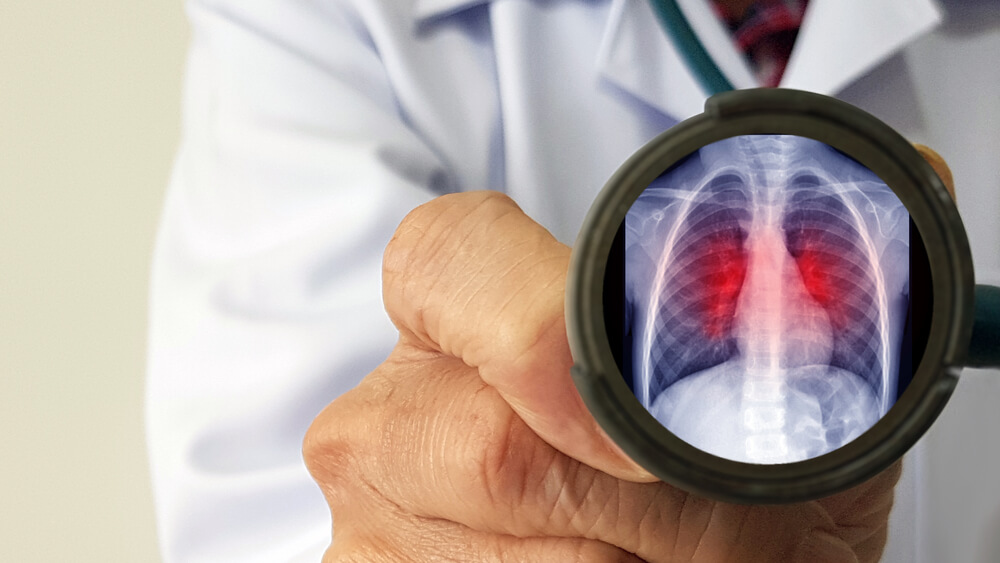Dangerous virus with symptoms of COVID-19 spreads in southern US: CDC calls for caution
While people have focused on COVID-19 for months, the Centers for Disease Control and Prevention (CDC) is now warning of the rise of another respiratory virus: RSV. What is it and what are his symptoms, the publication said. Health.

Photo: Shutterstock
On June 10, the CDC issued a medical report warning doctors of an increase in respiratory syncytial virus (RSV) cases in the southern United States.
"Because of this, CDC is encouraging increased testing for RSV among patients with acute respiratory illness who test negative for SARS-CoV-2, the virus that causes COVID-19," it said.
“This health advisory also serves as a reminder to health care personnel, child care providers, and long-term care facility staff not to report to work sick, even if they test negative for SARS-CoV-2,” it said.
What is RSV
Respiratory syncytial virus is a common respiratory virus that usually causes mild, cold-like symptoms, according to the CDC.
RSV is distributed in several ways:
- When an infected person coughs or sneezes
- When drops of the virus get into your eyes, nose, or mouth
- When you touch a surface that has a virus, such as a doorknob, and then touch your face
- When you have direct contact with RSV, for example, you kiss the face of a child with the virus.
RSV cases have been below normal since April 2020, but began to rise in March 2021, according to the CDC. Cases have risen particularly sharply in Florida, Georgia, North Carolina, Texas, and Oklahoma, according to the CDC.
On the subject: Gone, but promised to return: what to expect from the influenza virus that disappeared during the COVID-19 pandemic
RSV is serious
May be. Most people with RSV recover in a week or two, according to the CDC, but the virus can be serious, especially when it affects children and the elderly. In the United States, RSV is the most common cause of bronchiolitis, inflammation of the small airways in the lungs, pneumonia, and lung infection in children under one year of age.
RSV causes about 58 hospitalizations and up to 000 deaths in children under 500 years of age each year, as well as 5 hospitalizations and 177 deaths in adults aged 000 and over, according to the CDC.
What are the symptoms of RSV
People infected with RSV usually develop symptoms 4 to 6 days after infection, according to the CDC. These usually include:
- cold
- loss of appetite
- cough
- sneezing
- heat
- wheezing.
Why RSV cases are on the rise in the south of the country
At this point, it is not entirely clear why people in the southern states are increasingly exposed to RSV. What's really known: It's unusual to see so many cases of RSV at this point in the year.
“RSV is typically seen in late fall and winter,” said respiratory tract infection expert Timothy Murphy, MD, senior associate dean for clinical and translational research at the University at Buffalo Jacobs School of Medicine. “It reaches a peak in winter and declines sharply in spring. But this year it happened differently.”
You may be interested in: top New York news, stories of our immigrants and helpful tips about life in the Big Apple - read it all on ForumDaily New York.
However, there are several theories about what is behind this. "It's possible that RSV levels were low in the winter because of masks and less interaction between people - the virus wasn't being transmitted as often," Dr Murphy suggests. “Now that the COVID-19 vaccine is being used more widely and people are returning to normal life, the virus has more opportunity to spread from person to person. Children returning to daycare and families and people getting together more often could cause the spread of RSV.”
How to Distinguish RSV from COVID-19
If you develop symptoms, it's only natural to wonder if RSV or COVID-19 might be causing them, given that we are still dealing with a global pandemic. Unfortunately, there is no easy way to find out without visiting a doctor.
“You can't be 100% sure,” says Dr. Murphy. “They can both cause upper respiratory tract infections.” Because of this, he said, “tests will be required.”
If you develop symptoms, talk to your doctor. Most likely, you will need to get tested for both RSV and COVID-19, just in case.
Read also on ForumDaily:
XNUMX myths about salvation from the heat, in which you should not believe
Six popular tricks that, contrary to popular belief, do not save you from germs
Dangerous for health: 8 tips on what not to do in the heat
Myths and truth about mosquitoes - from historical facts to the danger of bites
Subscribe to ForumDaily on Google NewsDo you want more important and interesting news about life in the USA and immigration to America? — support us donate! Also subscribe to our page Facebook. Select the “Priority in display” option and read us first. Also, don't forget to subscribe to our РєР ° РЅР ° Р »РІ Telegram and Instagram- there is a lot of interesting things there. And join thousands of readers ForumDaily New York — there you will find a lot of interesting and positive information about life in the metropolis.











